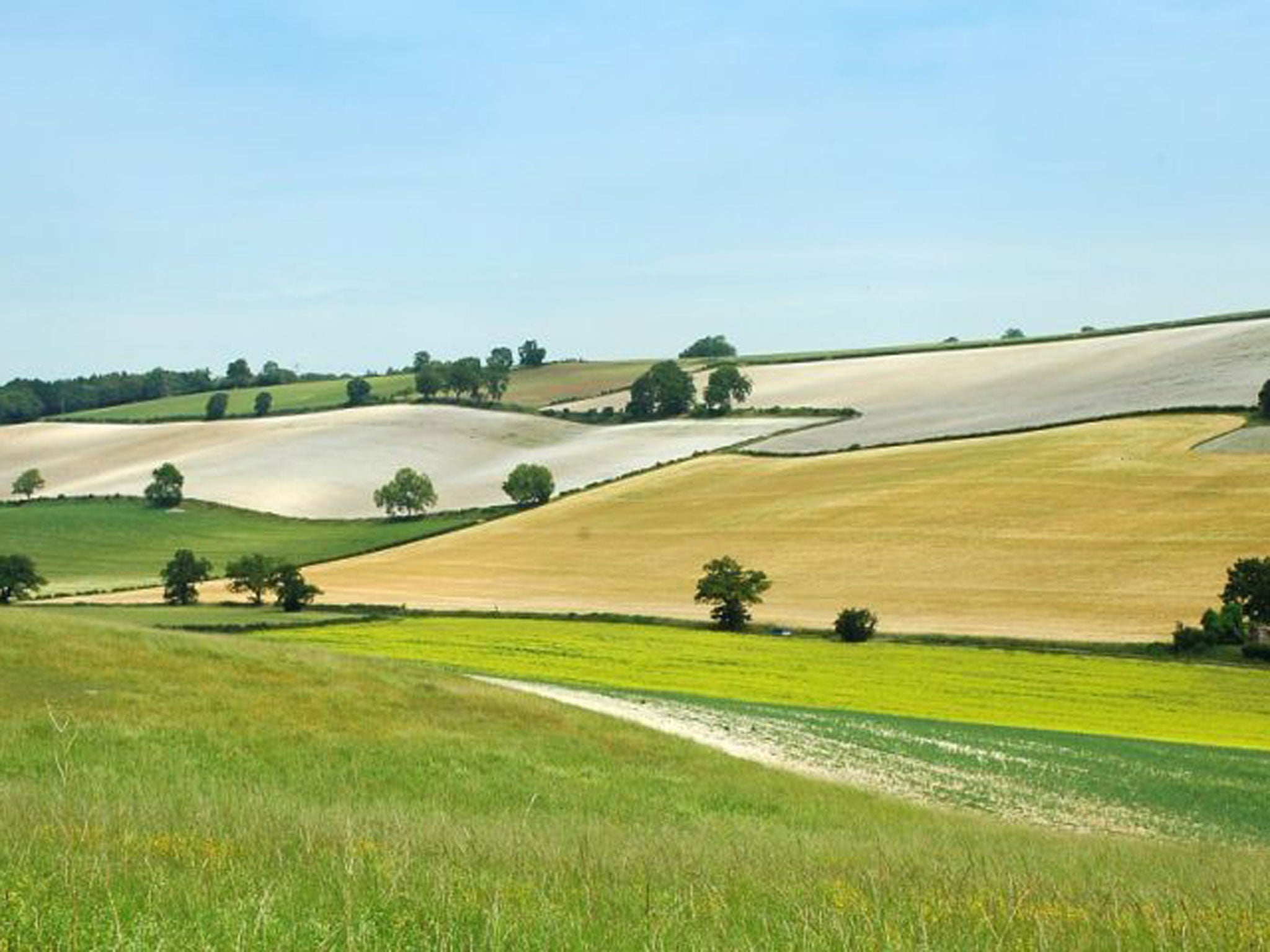'Listen out for woodpeckers drumming," promises the information board in the car park at Warburg Nature Reserve. Right on cue, we hear the familiar, deep echoing thump-thump among the trees overhanging our route. We catch a flash of red as it settles on an ash tree: a greater spotted woodpecker in its element.
It's a refreshing encounter. We're walking in the Chilterns, near Bix Bottom, four miles from the Thames and Henley. This is an area of great beauty, but which is under pressure. Housing development periodically nibbles away at this rural lung of the South-east and, more recently, the proposed high-speed railway (HS2) seems poised to cut through its heart. Despite some compromises on the route and tunnelling, the fear remains that the line will irrevocably change the way the Chilterns are used and viewed.
All in all then, the woodpecker marks a hugely uplifting way to start the walk, and it soon becomes clear that whoever put this route together for the Chilterns Area of Outstanding Beauty really knows the lie of the land and its features. It's been a while since I've enjoyed such a rhythmically smooth walk, with gentle ups followed by sweeping downs. I feel as though I'm walking around the lip of a hollowed-out crater, or amphitheatre, the edges of which are fetchingly crumpled and crinkled.
Through Kitesgrove Wood we walk past fences of wattles of ash, while the last flocks of redwing flitter between the branches – the very last stragglers poised to return to Scandinavia for the summer. The bluebells have exploded into colour, with the reserve's abundant orchids not far behind.
After a secluded amble under a canopy of native trees – coppiced beech, some oak and a sprinkling of yew trees – the route swings upwards across fields to cut through the edge of the nature reserve. The wood here is less intensively managed, exposed chalk breaks through the soil, the tree tops have settled in lean-to poses, propping one another up, and there are wonderfully twisted vines and branches.
Emerging from the wood, I come upon Maidensgrove Common, a huge expanse of open land, fringed by the occasional cottage, frequented by fluttering meadow pipits. The local by-laws are pretty strict – a notice warns against driving cars or flying model aircraft – and with almost no housing, the common soaked up a good deal of the rain that fell in January and February, perhaps preventing worse flooding down in the valley.
The path is full of temptations. I give in at the Five Horseshoes pub, just beyond the common, before continuing down a steep hill, and I resolve to come back with toboggans in winter for what, in snow, must be something of a black run, with striking views right across the Chilterns.
It's turning out to be one of those walks where the wildlife pops up on demand. I spot nuthatches, foxes, buzzards and pick out a sparrowhawk rustling furtively in the conifer trees. Birds and butterflies under pressure elsewhere are improbably doing well in this secluded slice of the crowded south-east. Another bird, the red kite, is everywhere. If you come from a part of the UK that doesn't have them, then you find it difficult to take your eyes off them, even though they seem to be as common as pigeons here. They hang in the air in a vaguely prehistoric, mosquito-like way, and when the sun flickers across their feathers, they take on a pre-Raphaelite tinge. Not once on this walk, when I glance up to the skies, do I fail to see one.
The woods too are easy on the eye. The Chilterns are the largest area of native beech in England. Trees sprout like pillars of marble in aesthetically pleasing clumps, fringing hills and field edges.
Returning to the car park, I nose around the visitor centre, operated by the Berks, Bucks and Oxfordshire Wildlife Trust. There are good activities for children, and in the literature, there's the intriguing suggestion that some of the Warburg Nature Reserve's beech woods may never have been cleared throughout history. A nature garden sits behind the building and bees, dragonflies and butterflies are fizzing and fluttering between pollen sources and log piles. Warburg is a pocket of nature shoehorned into a busily populated area – three major towns and half a dozen major roads are within 15 minutes' drive – yet for now I feel as though I am as remote as anywhere I've been.
Getting there
The closest railway station to Warburg Nature Reserve is at Henley-on-Thames. Mark Rowe travelled via Maidenhead with First Great Western (firstgreatwestern.com). For times and fares from stations across Britain, call 08457 48 49 50 or visit nationalrail.co.uk.
Staying there
Mark Rowe stayed at Hartwell House (01296 74744; hartwell-house.com) which offers double rooms with breakfast from £240.
More information
Berks, Bucks and Oxfordshire Wildlife Trust: bbowt.org.uk
Distance: 4 miles
Time: Two hours
OS Map: Explorer 171 Chiltern Hills West
Directions: The Warburg Circular Walk can be downloaded at bit.ly/WarWalk
Subscribe to Independent Premium to bookmark this article
Want to bookmark your favourite articles and stories to read or reference later? Start your Independent Premium subscription today.


Join our commenting forum
Join thought-provoking conversations, follow other Independent readers and see their replies